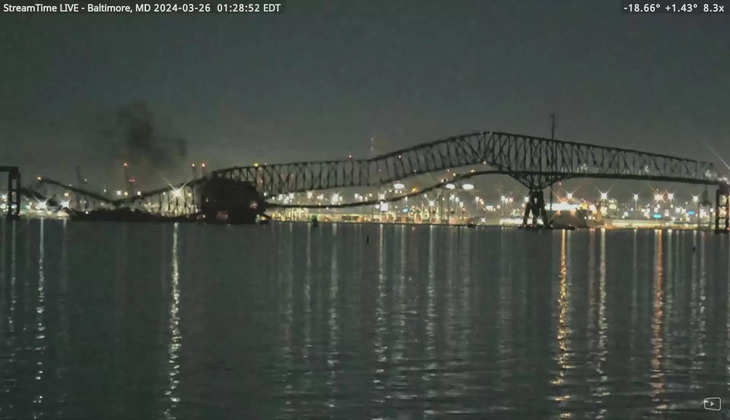Cars Fall into Water After Baltimore Bridge Collapse

In a sad turn of events, a container ship crashed into the Francis Scott Key Bridge, causing it to fall and sending cars and other vehicles plunging into the Patapsco River below. This caused chaos in the busy port city of Baltimore. The scary event happened very quickly and in the dark, leaving behind scenes of destruction and doubt.

Rescue efforts began right away, with first responders going out into the dark and dangerous water to look for survivors. Two people were luckily pulled to safety from the wreckage, but one was still in serious condition. It was still not clear how many people were killed, but officials said that as many as 20 people and many cars, including possibly big industrial vehicles like tractor-trailers, could have been caught in the accident.
Because of how bad the accident was, officials called it a mass-casualty event, which meant that many agencies had to work together to help. The city was getting ready for the hard work of recovery and rebuilding, which was expected to take several days.
The fall of the Francis Scott Key Bridge was felt outside of the city lines and brought back memories of other bridge disasters in the US. The country had not seen such a terrible bridge failure since the I-35W bridge in Minneapolis fell down in 2007. This shows how urgently we need to improve safety measures for infrastructure.
There was video footage of the impact going around the internet. It showed how hard the ship hit the bridge, sending cars rocketing into the water below. Initial reports said that the ship hit one of the bridge's piers in the dark of night. The exact reason of the accident was still being looked into.
In reaction to the disaster, Governor Wes Moore of Maryland announced a state of emergency. This allowed government resources to be sent to help with the response and recovery. Even though the accident was very bad, the officials moved quickly to rule out any suspicions of terrorism and stress the need for a full review to find out what happened.
The ship that crashed was the Singapore-flagged container ship Dali. At the time of the accident, it was hired by the shipping giant Maersk. The crew of the ship was said to be safe, but the accident caused problems in the marine industry and made people wonder how ports work and how to keep ships safe.
The fallout of the bridge failure put a shadow of doubt over Baltimore's important marine operations. The city is closely connected to its busy port. Because the port is such an important point for shipping cars and other goods, the accident had effects far beyond the area around the bridge.
As the city dealt with the fallout from the tragedy, questions remained about how strong America's old infrastructure really is. The fall of the Francis Scott Key Bridge was a sharp warning of how important it is to spend money on maintaining and updating infrastructure to avoid more disasters of this size.
The bridge, which was named for the author of the Star-Spangled Banner, Francis Scott Key, has been a sign of Baltimore's power and resilience since it opened in 1977. Still, its sad fall showed how weak the country's infrastructure network really is, leading to deep reflection and calls for strong action to stop similar disasters from happening again.
